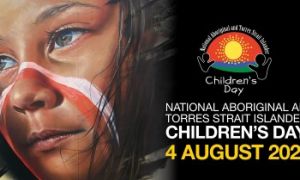The following lists reflection questions designed to help educators examine and enhance the learning environment in early childhood settings.
- How does the current layout support various modes of learning, such as active play, quiet reflection, and group collaboration?
-
Can children navigate the space with ease, finding clearly defined areas for both independent exploration and social interaction?
-
In what ways does the arrangement encourage children to take ownership of their learning (e.g., through accessible materials and flexible furniture)?
-
Is the environment designed with risk-managed opportunities that allow safe exploration and problem-solving?
-
How well does the space cater to diverse needs, including those of children with disabilities or additional support needs?
-
Does the physical setup allow for quick and smooth transitions between different activity areas?
-
How are the cultural backgrounds of the children and families reflected in the displays, resources, and narratives presented in the space?
-
In what ways can the environment be enriched with materials, art, or literature that celebrate local cultures, traditions, and languages?
-
Does the setting invite children to share their cultural stories, and are these contributions visibly celebrated?
-
Are learning areas designed to foster inclusive play that values all abilities and backgrounds?
-
How do educators intentionally design activities and resource areas to embrace diversity and promote equity?
-
What modifications or adaptations are made to ensure every child feels represented and valued?
-
How is the environment arranged to stimulate curiosity, with open-ended resources and provocations that invite children to question and explore?
-
In what ways do educators adapt the space based on children’s evolving interests and emerging learning needs?
-
Are there dedicated zones (e.g., art corners, ‘discovery’ areas) that promote creative problem solving and free thinking?
-
How do educators use the physical environment as a tool for scaffolding learning and extending children’s experiences?
-
What opportunities in the space invite child-led initiatives, and how are these documented and reflected upon?
-
How are educators trained to observe and harness spontaneous learning moments that occur naturally in the environment?
-
How does the learning environment extend beyond the classroom walls to incorporate experiences from families and the local community?
-
Are there spaces where children’s home cultures and family stories are showcased, strengthening the bridge between the centre and the community?
-
What role do families play in shaping and enhancing the environment, and how is their input integrated regularly?
-
In what ways do local community partnerships and visits enhance the resources and learning experiences available in the space?
-
How are community values, traditions, and local identities woven into the daily learning routines?
-
How effectively does the environment blend indoor learning with outdoor experiences, ensuring that nature is an active part of children’s day?
-
Does the outdoor space provide hands-on opportunities for environmental stewardship and nature-based learning?
-
How is curiosity about the natural world encouraged through both structural design and everyday routines?
-
What initiatives (like recycling projects, gardening, or nature scavenger hunts) are visible in the learning environment to foster responsibility for the Earth?
-
Are there ways the space exemplifies sustainable practices that children can learn from and contribute to?
-
How does our indoor layout support EYLF Outcome 1, ensuring that each child feels secure, valued, and able to express their identity?
-
In what ways do indoor spaces encourage a sense of belonging and support children’s well-being, as outlined in the NQS?
-
Are our learning areas organized to promote both structured and spontaneous play, supporting EYLF outcomes such as active learning and confident expression?
-
Does the indoor environment offer varied material access and zones for focused learning, creative exploration, and collaborative group work?
-
How are diverse cultures, languages, and individual interests visibly represented in our indoor settings to celebrate each child’s background, in line with EYLF and NQS expectations?
-
In what ways is the indoor space modified to ensure that all children—including those with additional support needs—can engage meaningfully and independently?
-
How well does the indoor layout support smooth transitions between activities (e.g., from quiet individual exploration to group-based projects), and does this flexibility reflect our responsive practice as per EYLF guidelines?
-
Are spaces easily adaptable to incorporate child-led ideas and phenomenon-based learning moments?
-
How does our indoor environment balance a safe space with opportunities for meaningful risk-taking and problem solving in line with NQS requirements?
-
Are emergency routes, safe zones, and calming areas clearly delineated and accessible within the learning space?
-
How does our indoor environment balance a safe space with opportunities for meaningful risk-taking and problem solving in line with NQS requirements?
-
Are emergency routes, safe zones, and calming areas clearly delineated and accessible within the learning space?
-
How effectively does our outdoor environment provide opportunities for children to interact with and learn about the natural environment, supporting EYLF’s emphasis on connectedness to the world?
-
What activities or features (e.g., gardens, natural play elements, seasonal changes) are present to nurture children’s understanding and respect for nature?
-
Do our outdoor spaces reflect and respect the diverse cultural and family backgrounds of our children, inviting input and participation from the community?
-
How can outdoor areas be enriched with resources that are accessible and adaptable for children with varying interests and abilities?
-
In what ways is the outdoor environment designed to adapt to changing weather, seasonal variations, and evolving pedagogical approaches, ensuring dynamic, risk-managed experiences?
-
How do outdoor settings encourage independent discovery and spontaneous group collaboration that builds confidence and social skills?
-
How do we collect and reflect on observations of children’s interactions within the outdoor environment, and in what ways does this feedback inform regular updates to the space, as encouraged by both the EYLF and NQS?
-
What strategies are in place to involve children, families, and community partners in the ongoing evaluation and enhancement of our outdoor learning areas?
Further Reading
Educators Guide To Critical Reflections
Reflection Vs Critical Reflection
List Of Reflection Questions For Programming and Planning


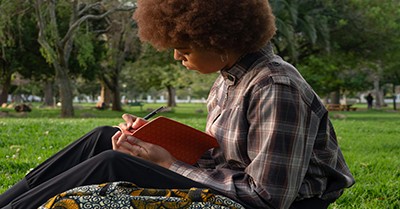




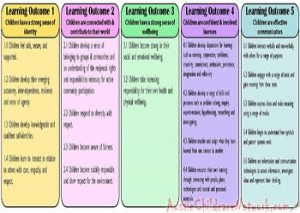 Here is the list of the EYLF Learning Outcomes that you can use as a guide or reference for your documentation and planning. The EYLF
Here is the list of the EYLF Learning Outcomes that you can use as a guide or reference for your documentation and planning. The EYLF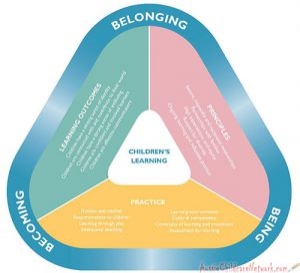 The EYLF is a guide which consists of Principles, Practices and 5 main Learning Outcomes along with each of their sub outcomes, based on identity,
The EYLF is a guide which consists of Principles, Practices and 5 main Learning Outcomes along with each of their sub outcomes, based on identity, This is a guide on How to Write a Learning Story. It provides information on What Is A Learning Story, Writing A Learning Story, Sample
This is a guide on How to Write a Learning Story. It provides information on What Is A Learning Story, Writing A Learning Story, Sample One of the most important types of documentation methods that educators needs to be familiar with are “observations”. Observations are crucial for all early childhood
One of the most important types of documentation methods that educators needs to be familiar with are “observations”. Observations are crucial for all early childhood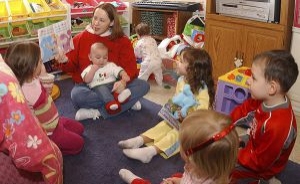 To support children achieve learning outcomes from the EYLF Framework, the following list gives educators examples of how to promote children's learning in each individual
To support children achieve learning outcomes from the EYLF Framework, the following list gives educators examples of how to promote children's learning in each individual Reflective practice is learning from everyday situations and issues and concerns that arise which form part of our daily routine while working in an early
Reflective practice is learning from everyday situations and issues and concerns that arise which form part of our daily routine while working in an early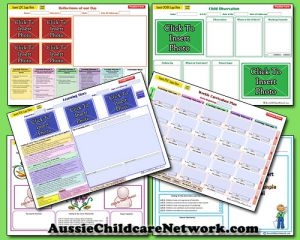 Within Australia, Programming and Planning is reflected and supported by the Early Years Learning Framework. Educators within early childhood settings, use the EYLF to guide
Within Australia, Programming and Planning is reflected and supported by the Early Years Learning Framework. Educators within early childhood settings, use the EYLF to guide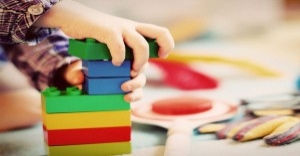 When observing children, it's important that we use a range of different observation methods from running records, learning stories to photographs and work samples. Using
When observing children, it's important that we use a range of different observation methods from running records, learning stories to photographs and work samples. Using This is a guide for educators on what to observe under each sub learning outcome from the EYLF Framework, when a child is engaged in
This is a guide for educators on what to observe under each sub learning outcome from the EYLF Framework, when a child is engaged in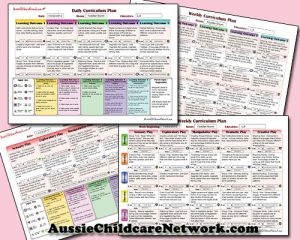 The Early Years Learning Framework describes the curriculum as “all the interactions, experiences, activities, routines and events, planned and unplanned, that occur in an environment
The Early Years Learning Framework describes the curriculum as “all the interactions, experiences, activities, routines and events, planned and unplanned, that occur in an environment

